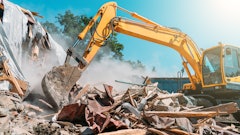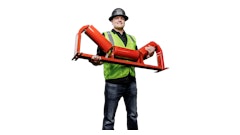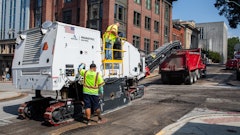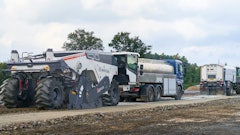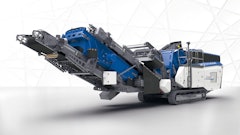
Construction waste is a massive problem; it accounts for up to 30 percent of all waste generated worldwide, and is expected to reach 2.2 billion tons globally by 2025. With as much as 30 percent of building materials delivered to construction sites ending up in landfills, we need to be paying attention.
Why should construction professionals care about reducing waste? The obvious reason is environmental. Producing less waste reduces depletion of our planet's natural resources, minimizes waste going to landfills, lowers the risk of pollutants, and reduces emissions resulting from creating and transporting that waste.
But aside from environmental benefits, reducing waste can save an immense amount of money on projects by using building materials more effectively. This cost savings is especially important now when the cost of materials is up nearly 20 percent driven by inflation, supply chain constraints, and operating constraints. This is a win-win for everyone – leading to better savings for the client, and in turn, repeat business for the contractor.
Defining Waste Reduction
To begin, it may be helpful to define what construction waste, and waste reduction, really mean. Construction waste is defined as anything that is generated as a result of construction, and then abandoned, regardless of whether it has been processed or stockpiled.
Waste reduction involves minimizing waste generated during construction and over the building’s life, while maximizing materials that can be reused or recycled. It’s one of the key principles in sustainable construction – alongside water conservation, energy efficiency, and indoor air quality, among others.
For instance, to reduce waste on a project, one might consider mitigating mistakes that lead to over-ordering materials, ordering incorrect materials, choosing building materials that can be recycled more easily, or reusing materials (such as drywall scraps) in other parts of the project.
In sustainability, we’ve all heard the phrase: “Reduce, Reuse, Recycle.” Reduce is listed first for a reason; it’s the most effective way to a more sustainable future, and should be the first tactic that comes to mind when building.
Key Technologies Driving Construction Waste Reduction
Many technologies exist to help combat the massive (and growing) issue of construction waste. The two that I’d like to focus on are Building Information Management (BIM) and Virtual Design and Construction (VDC).
BIM is a building design technology that creates intelligent, 3D models to provide a digital representation (i.e. “digital twin”) of a built structure. This kind of representation allows for increased insight into the building’s planning, design, construction, and management.
Similarly, VDC allows construction professionals to combine advanced digital models across building disciplines with traditional project planning and management techniques to ultimately build a project digitally before it is built physically.
These two technologies go hand-in-hand—ultimately, enabling value engineering by visualizing material details in a way that can be experienced in 3D.
Through these types of advanced 3D modeling, professionals can attain to-the-inch accurate measurements on a structure (often more accurate than measuring by hand; and much faster), and order building materials accordingly. And when the ordering process is precise, waste is minimized.
While these cutting-edge 3D modeling technologies are already quite advanced in commercial and industrial construction, they have not been widely available to the contractor that specializes in residential building due to cost and time. But that is now changing, as these solutions become more affordable and available to residential builders. And I predict that AI will push the envelope even further and have even more profound impacts on waste reduction and value engineering in residential building.
The Client's Role in Waste Reduction
It’s clear that construction professionals play a large role in reducing the amount of waste produced on a project. However, the client’s decision-making can also be a factor. For example, in residential construction, homeowners might change their mind after something is installed because they don’t like how it looks.
To minimize the chances of this happening, it’s important to engage clients in the decision-making process when building new builds and/or renovating. With closer engagement, they’ll be more confident in the building decisions and, in turn, less likely to change their mind after the fact.
Modeling technologies help drive this level of engagement. By showing a client an exact visual representation of the project before the physical building process begins, their level of confidence in decisions is increased, and so is their overall satisfaction with the end result.
AI and GML (generative machine learning) applications are taking this level of engagement and visualization even further. For example, a client can visualize how different materials or colors look on various features of the project, in photo-realistic detail, to drive decisions, and ultimately, better satisfaction.
Challenges and Obstacles
While simple in concept, waste reduction is no easy feat. Particularly, when we look at the residential construction industry, the vast majority of residential construction is done by small businesses, who generally speaking, have not adopted this kind of technology. But many new technologies are emerging making this both simpler to adopt and more affordable.
The construction industry has a great responsibility in terms of the amount of waste it produces. However, by embracing new technologies, stricter regulations, and a collective focus on the environment, we can strive towards a more sustainable way of building our world.









